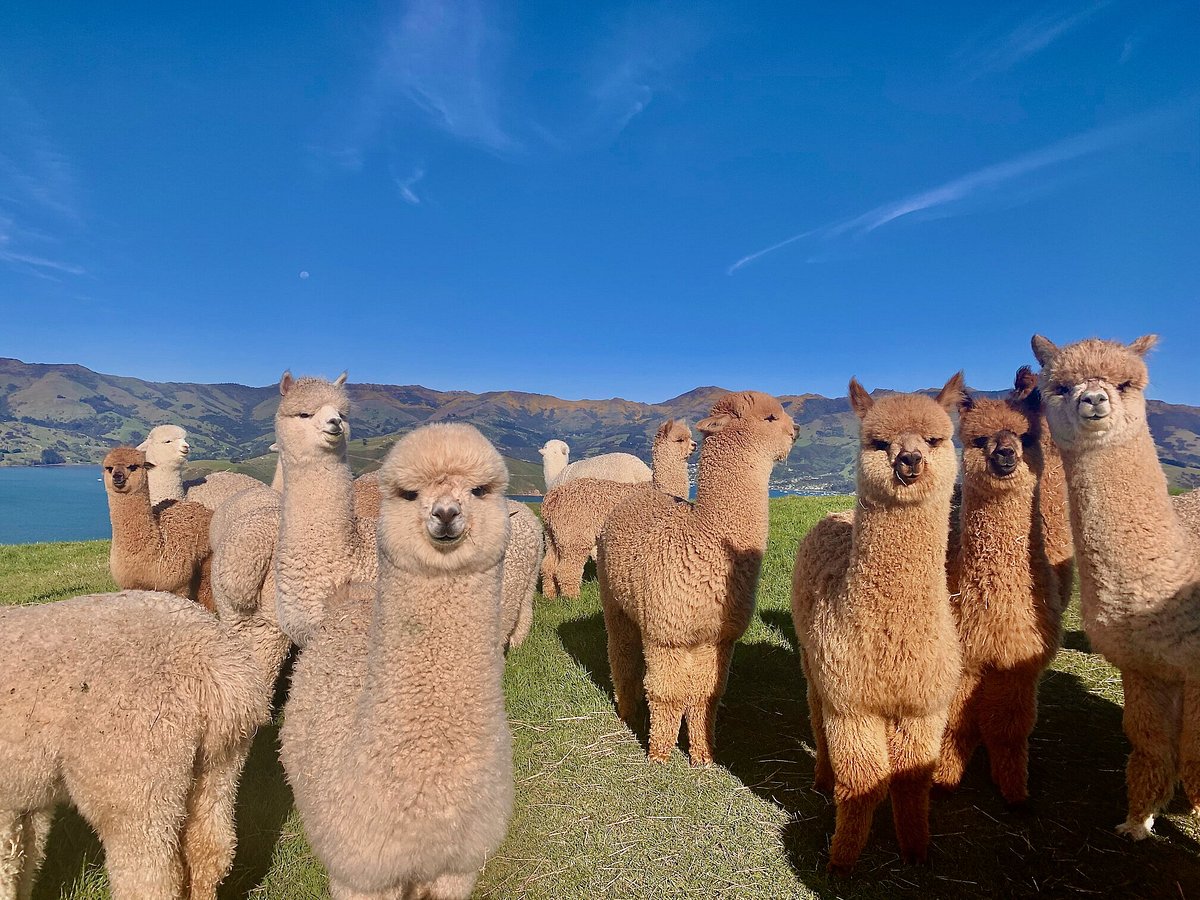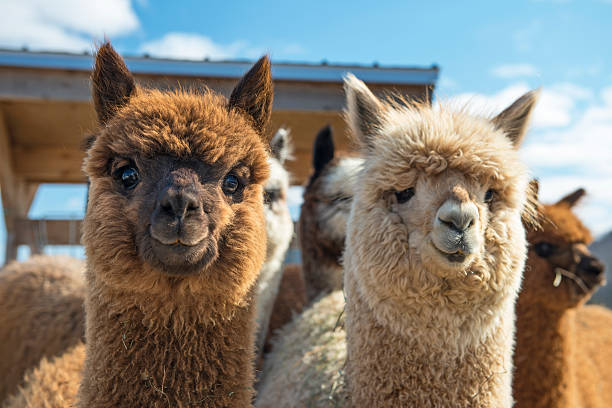Currently, it is becoming more common for shops to provide customers with garments made from alpaca wool. In the past, only rulers were permitted to wear clothing produced from this animal’s fleece, but now it is accessible to anyone who can afford it. Despite its high cost, alpaca wool is renowned for its exceptional quality. Nevertheless, for many people, even today, the alpaca remains an exotic creature, not quite as mythical as a unicorn, but still somewhat mysterious.
Alpaca wool has been compared to the fragrance of French perfume by experts who claim it does not require extensive washing. A quick rinse with running water and drying is sufficient before knitting.
Alpacas are domestic artiodactyl animals that have inhabited South America for thousands of years. Presently, approximately three million alpacas reside in the Andes Mountains of South America, with countries like Peru, Chile, Argentina, Bolivia, and Ecuador all breeding them.
These creatures are raised in natural habitats, such as mountain pastures, forests, and coastal regions, where they graze freely and consume a plant-based diet consisting of any available vegetation.

Alpacas have a height of about one meter and an average weight of 70 kilograms. Their appearance is a cross between that of a sheep and a llama. They have a flat face, with small spear-shaped ears and a bifurcated, camel-like upper lip. Additionally, they possess soft, curly hair on their bodies, which can reach up to 15-20 cm in length.
Alpacas are members of the callus-footed animal group, possessing two-toed paws with claws instead of hooves. They have a unique stomach with three compartments and lungs designed to enable them to survive in high altitudes with rarefied air.
These intelligent and peaceful animals communicate through body movements and vocalizations, and they prefer living in herds for safety. The herd typically consists of family groups headed by the largest alpha male, who claims multiple females as part of his harem.
During mating season, multiple males compete for the same female, and fights often ensue, with the winner becoming the alpha male and receiving the female. After a pregnancy that lasts approximately 11 months, a single baby alpaca, weighing around 6-7 kg, is born and can stand on its legs within an hour of birth.
The exact date of when the first alpacas were domesticated is uncertain, but there are many ancient images of them. The earliest known description of alpacas was recorded in the book “Chronicle of Peru” by Cies de Leon in 1553. Scientists believe that the Incas were the first to domesticate these animals over 6,000 years ago.

Alpacas can thrive in any climate if they bond with humans, but they should not be kept alone. These animals are primarily bred for their wool, which is harvested by hand. The quality of the wool depends on their diet and living conditions.
The amount of wool produced varies by gender, with females yielding 6 kg and males producing up to 14 kg, which is collected twice a year. Alpacas are divided into two varieties: Huacaya and Suri. Huacaya alpacas are more common and have short, fluffy hair growing perpendicular to their skin. Suri alpacas have long, curly hair and are bred mainly on farms in fenced pastures.
Shearing alpacas is a complex process, usually done in the summer, and is considered an art. The best wool comes from the back and sides of the animal, while wool from the neck, belly, and paws is considered lower quality. After shearing, the wool is sorted by hand, cleaned, and combed. Alpaca wool is three times stronger and seven times warmer than sheep wool. To lower costs, synthetic threads are sometimes added in the production of clothing and other products.
Fashion houses combine silk with alpaca wool to create a lightweight and beautiful fabric. Alpaca wool comes in a wide range of colors, with around 20 different shades, from pure white to beige, sand, pink, gray, silver, brown, and black. In South America, white is the most highly valued color.

Alpacas not only have a beautiful appearance, but their wool is also soft, warm, and therapeutic. Alpaca wool is waterproof, keeping the wearer dry in rainy weather, and does not contain fat, which means it stays cleaner for longer and allows the skin to breathe. Alpaca products are recommended for people with joint and vertebrae issues and for allergy sufferers, as it does not cause irritation.
Alpaca wool has excellent thermoregulation, keeping the wearer warm in the winter and not overheating in the summer. In the United States, handmade alpaca clothing and interior items are produced in factories.
Proper care is necessary to ensure that alpaca items last for a long time. They should be washed by hand in cold water and dried on a flat surface away from heating elements and direct sunlight. It is recommended to store alpaca wool with lavender or tobacco, as naphthalene can damage the fibers. To enhance the fluffiness of the wool, it is suggested to use a soft brush to walk over the product.
Alpaca wool has a rich history in South America, where it has been used for thousands of years to create fabrics, carpets, and other items. Alpaca wool was even used as currency by the Andean peoples. However, during the 15th century, Spanish conquistadors attacked the Incas, killing both locals and alpacas. Later, in the 19th century, Europeans began to appreciate alpaca wool, and it became popular in women’s fashion.

In the 20th century, synthetic threads replaced silk, causing the price of alpaca wool to decrease. In 1984, the Huacaya alpaca was reintroduced to the United States, and governments of Peru, Chile, and Bolivia allowed the export of alpacas to other countries to prevent extinction. Today, alpacas are mainly bred in South America, but farms have also appeared in other countries.
Alpacas not only provide wool but are also kept as ornamental animals. Alpaca wool clothes are timeless and can bring joy for years to come, with items such as coats and jackets being particularly popular.
To breed alpacas, it is necessary to construct a shelter that can protect them from snow, rain, and wind.
Alpacas can be fed a variety of vegetables and fruits, including hay, pumpkins, and apples. They also enjoy eating fruit tree leaves.
Alpacas have a fondness for swimming, and can be sprayed with a hose. They require sand baths to keep their fur clean and soft.
Their soft pads require trimming every two weeks since they lack hooves. Alpacas are excellent natural lawn mowers, as they gently pinch grass without uprooting it.
In our climate, alpacas are typically sheared in April, yielding around 3.5 kg of valuable wool per shearing.
Some exotic enthusiasts crossbreed llamas and alpacas to produce a hybrid animal called a “uariso.” Although these hybrids cannot reproduce, they make excellent pets and are known to have calming effects on both children and adults, benefiting the cardiovascular and nervous systems.



